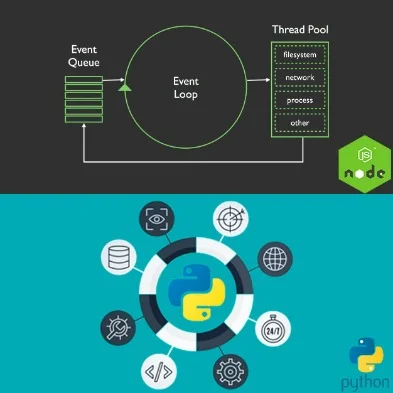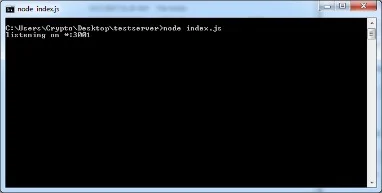Difference Between Client Side Javascript And Server Side Javascript
Content
- Used As A Single Programming Language
- Node Js Vs Python: Whats The Difference?
- Javascript On The Server
- How Do You Create A Simple Express Js Application?
C++, Java, Ruby and Python havew their place in their respective domains. New companies and products will be getting built on wide variety of languages. I predict ROR adoption would still be high in coming years for building web applications . Node uses async event-based I/O via libuv (incl a thread pool reserved for I/O requests).
Web application developers are inundated with options when it comes to choosing the languages, frameworks, libraries, and environments they will use to build their applications. Depending on which statistics you believe, the total number of available languages is somewhere between 700 and 9000. The most popular—for the past nine years according to the 2021 Stack Overflow Developer Survey—is JavaScript. It includes hooks for the usual things you want to do with a web server, like hosting files and getting query input from a user. Though it’s not required, it’s generally good practice to include a package.json file with each node project. This file stores metadata about your project like author, license, as well as any dependencies on other node packages.
Used As A Single Programming Language
Due to this, they don’t need to use an additional server-side programming language. Also, it means that there is no need to hire a different developer for the front-end and back-end. Developers often need to carry out complex actions to add features to an existing app. With Node JS, scaling the application horizontally or vertically becomes relatively easy. Node JS developers can do this by adding nodes to the available system. Not only this, the platform creates the opportunity to add more resources to each node for vertical scaling.

It is popular amongst the developers as it is not just a framework but a complete javascript that features all the tools which are required by the developer. Whether you’re developing a real time application or building a web app that needs event-based server, Node.js is the ideal backend framework of choice. Well I define scripting languages as runtime compilation languages, but there is a lot of overlap these days. I prefer the reassurance of compile time verification of at least coding accuracy but that is not the only factor. ORMs are an ugly approach to data access on relational databases, but you would probably have to be a database developer to realise why. Data design and Program design have different constraints, ORMs do either an injustice or have to be modified so much that they provide no productivity.
Node Js Vs Python: Whats The Difference?
He also works as Cordova plugin developer, Web Services expert, Database engineer, Linux Operator and technical advisor. Another con of the asynchronous programming is the codes tend to become clumsy and the programmers have to depend on the nested calls. However, many developers may find this programming model to be more difficult in comparison to the linear blocking I/O programming. This makes it difficult for the developers to even implement the common programming tasks using Node.js. At times, a new API appears having a number of backwards-incompatible changes. As a result the developers are forced to make changes in the accessible code bases to match the compatibility with the latest version of the Node.js API.
- So application maintenance is of paramount importance, and following best maintenance practices can save money, speed-up development and offer continuous improvement for your app.
- Splitting an app up into multiple small parts makes it easy to maintain, independently deployable and scalable.
- To run JS files in Node, the node command followed by a file path will execute the program file.
- If your application doesn’t have any CPU intensive computation, you can build it in Javascript top-to-bottom, even down to the database level if you use JSON storage Object DB like MongoDB.
Also, Mojito has a system called Mojits, which supports the modules of a Mojito application. Not every client who has an active session needs to be allocated their own thread – threads are shared and each user only needs a thread to service requests. Requests come in in short bursts and don’t need to tie up a thread for very long if the back end code is executing in a highly optimized, compiled language and a fast database. For this reason you can’t say “System A can support 10,000 threads therefore it can only support 10,000 clients”. The number of clients supported is orders of magnitude greater than the number of threads available because of diversity. Most UI’s, if well written, only ‘phone home’ to the server when absolutely necessary – not “all the time”.
PHP and Node.js are two of the major backend technologies that power web applications. PHP is older between the two, so it naturally has a larger community and major projects in its kitty.
PHP is a good choice for a standardised solution such as a blog, news site, landing page or web portal. With such CMS as WordPress written in PHP, you can create stable and customisable blogs without too much coding. It’s possible to avoid choosing between these two by developing an application in Java and linking to it with JavaScript through an engine like Rhinorun. However, in a real-world scenario, using Node.js for your web application makes more sense. On the other hand, Java is great for applications that are CPU intensive or CPU-bound. The same goes for applications with a vast code base – since Java provides strongly typed sources, refactoring it and bug fixing will be more straightforward during its maintenance. Of course, there are lots of different technologies out there to choose from, and each one will bring something different to your project or application.
With Heroku and Nodejitsu, it is easy to use Node.js in a Platform-as-a-Service setup. Recently, however, some PHP loyalists have expressed displeasure toward receiving lackluster projects. This has prompted them to migrate to other platforms especially because the inherent features of PHP can be imported there as well. PHP has been around longer than most technologies, so it has a bigger community and a larger number of projects under its belt. But one key issue here is that the newer projects developed by the community just appear uninteresting when compared to Node.js.
Javascript On The Server
System level I/O operations in Node are handled by libuv which does use a background thread pool. The difference is, the main thread can fire and forget the task to a background thread and the background thread will notify the main thread when the operation is completed. Even with background thread processing, doing lots of I/O operations doesn’t scale very well. For long-running CPU-heavy tasks (ex image/movie encoding) offloading the tasks to worker nodes is still preferable. In most languages, I/O operations are handled in a synchronous manner so if they requests are made on the main thread, they’ll block execution until completed.
Django, along with Python, is also considered to have a milder learning curve. While working with Node.js will require extensive knowledge of JavaScript, Django is a “batteries included” technology. It has a built-in admin panel to easily update and maintain your databases and templates to accelerate your work.
Node.js is far more than an application framework – it’s also used in corporate data software, rapid application modernisation projects, and IoT solutions. DigitalOcean is a VPS provider that offers some additional features and products targeted at Node.js apps.

It allows adding route tables and setting up middleware in your application. A server is responsible for taking client requests through its software , performing the required set of tasks, and finally sending responses back to the clients.
Where Node really shines is in building fast, scalable network applications, as it’s capable of handling a huge number of simultaneous connections with high throughput, which equates to high scalability. With Node.js, the developers can get an extended support for the various commonly used tools. Suppose, you want to test the source code of Node.js application; you can do so by using the Jasmin and other such unit-testing tools.

REST API-based applications—JavaScript is used both in the frontend and backend of sites. Thus, a server can easily communicate with the frontend via REST APIs using Node.js. Node.js also provides packages like Express.js and Koa that make it even easier to build web applications. Internet of Things—IoT applications usually comprise multiple sensors, as they frequently send small chunks of data that can pile into a large number of requests.
Besides, several PHP frameworks have one common issue – mixed content and code. With frameworks like Meteor, Derby, Express, and Sails, Node.js has seen a massive expansion of its libraries in a relatively shorter period. While these frameworks can boost productivity reducing development time and resource consumption, PHP’s frameworks outnumber those of Node.js by a huge margin. This order-independent execution is generally referred to as ‘concurrency’.
This process makes it easy to send and synchronize the data between these two points automatically, thus helping developers save time. Starting from speed to proficiency in developing real time web applications – there are many reasons why businesses are taking up Node.js development services for their web application. JavaScript is the programming language that web applications are using on the client. Using the same language on the server-side means that the developer can apply his JavaScript knowledge both on the client and the server, and use the same functions as needed. Secondly, there are many good frameworks, starting with the Flask microframework and ending with the full-fledged Django framework. With the speed of execution on the backend, everything is fine there too. As a server-side runtime, every Node.js process is executed on a server; essentially working on the backend aspect of an application to manage data.